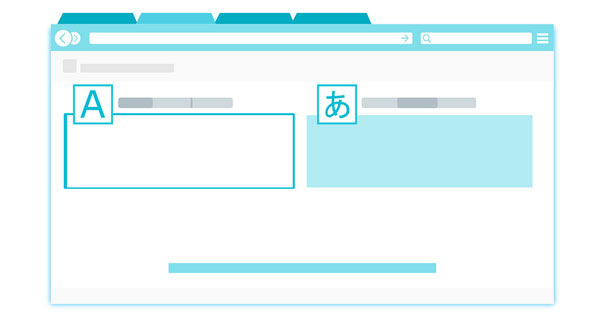Source: pixabay.com/
Many website administrators think that localization is similar to translation. In their minds, if they decide to localize their website, then they should just translate it in the target language, and their work is done. The reality is totally different, as localization comes with many more implications. Apart from using natural language, you should also put effort into offering flawless customer experience. Localization will help you understand the local culture and adapt to it. Therefore, you will be able to create and deliver the right message to your target audience. Your prospects will immediately notice if you don’t understand their traditions and you are just looking for profit. So, you will need to make them feel that you have adapted to their local customs, and you have a solution to their needs.
Localization is not an easy process. This is why many website administrators decide not to do it, or they do it wrong. So, if you have plans to localize your website and you don’t know where to start, then you should read this article.
Top Localization Challenges That Website Administrators Face
- The website design should be localized
One of the biggest challenges that website administrators face when they try localization is regarding website design. In e-commerce, you will need more than just engaging content. Localization should be applied to both content and website design. Thus, when you start your website localization, you should also think about what you need to change in how your website looks.
You should carefully analyze if the colors and symbols that you use on your website are accepted in the local culture of your new target audience. Also, you should pay attention to how the text looks. German, for example, uses long words. Therefore, if you use drop-down boxes, you should take into consideration how your website would look like when you translate the text in the target language.
The way your menus look like can also be influenced by the language you choose. A website in English looks excellent with vertical menus, arranged on the left side of the page. This happens because English reads from left to right. But, if you want to target the Hebrew audience, then you should be prepared to arrange your texts to be read from right to left. Thus, it doesn’t make any sense to have the menus arranged on the left side. You should instead put them on the left side of your page and adapt your writing and website design for each language.
- Not all localizers know how to use market-specific terminology
The simplest way to translate your website is to go to translation companies and ask for a quotation. However, translators will only put your text in the language you target. But, for localization, they will also need to understand the story behind and the specific market terminology. Despite their translation certifications, they will need your assistance in understanding what type of clients you want to target. You should also tell them how you imagine the customer experience you want to offer.
You can overcome this challenge by choosing translators living in the country you want to launch your website and portfolio of products. You can also work with PickWriters, or similar content localization services. This type of translator knows the local terminology and can quickly identify the phrases when you need to adapt your text, rather than just translate it. In case you don’t find a local translator, you can go to the country you target and mingle with the locals. By spending time and watching how a typical day looks in the new country, you will be able to understand the local language and reach a high localization standard.
- Understanding the local culture
One of the biggest challenges that website administrators face is understanding the local culture. Customers like personalized messages and feel that you create the content thinking of them. Each culture has its particularities. Thus, you should do extensive research before launching your website. For example, Japanese or Arabic people prefer a website that is very intuitive and interactive. Therefore, you should think of including plenty of visuals and animations. However, you should pay attention to how fast your website loads. If they prefer an intuitive site, they won’t have the patience to wait for your website to load.
On the other hand, if you want to target people from North America or Germany, then you should be prepared with short and precise phrases. These people don’t have time to waste, and they will shift their attention from a website that doesn’t contain explicit instructions. Thus, you can arrange your website design with clear menus and keep a linear progression on your website. Keywords are also important not only for SEO and marketing purposes but also for customer engagement. Understanding the local culture will help you identify and use specific keywords that attract the customers’ attention and keep them engaged until the end.
- Fail to determine clear business goals
When you decide to localize your website, you should also have clearly in your mind what exactly you want to obtain. Why are you doing this change? This is one of the challenges that many website administrators fail to overcome. Many of them think that if they launch a website, they should automatically translate it into two or three languages and expect that their number of clients will increase. Unfortunately, they discover at a later stage that nor their clients’ portfolio or their revenues didn’t experience any growth. This happens because they failed to determine clear business goals, and they don’t know where to start with their localization process.
There are a few questions that you should ask yourself before you decide to localize your website. First, you should clarify what you will use your site. Will you use it for direct sale or to promote conversions? You can schedule a brainstorming session with your management team and define the goals for your website localization. In case you end up having more than one purpose, you should prioritize them and focus on them one by one. You should also determine which parts of your website are crucial and bring the highest conversion rate. This exercise will help you decide which areas of your website you should focus on and ensure a sound localization to attract your clients.
Finally, you should also discuss with your lawyers and understand the local legislation requirements. Depending on the advice you receive, you will be able to determine which content needs strict localization. You will also know where you need to work more to make sure that you won’t end up getting any penalty from local authorities.
- Fail to localize your website because of improper research
Even though your product has excellent performance at this moment, this doesn’t mean that it will be hugely successful in any country you launch it. Thus, the key behind your products’ success lies in your ability to localize your website and do highly detailed research. Understanding your customers’ culture and their shopping preferences will help you determine the level of localization you will apply to your content.
Once you understand how and why your target customers buy products, you will be able to localize your content and personalize the messages you send them. When they feel that their needs are on top of your interests, potential customers will start trusting your brand. Once they become loyal clients, they will automatically recommend your products to their friends or family. Thus, as long as you understand what your customers want and do in-depth research, the results won’t fail to appear.
Final thoughts
Even though it seems a natural process, localization comes with a lot of challenges. However, you cannot avoid and think that you won’t need it. Once you launch your website, it is reasonable to want to expand your business. Thus, you will need localization to take your business to the next stage and attract customers from various countries around the world. Localization starts with deep research and understanding of what your target audience expects from your side. You should also dig deep into the local culture and put effort to understand it as much as possible. Follow the steps below, and you will soon notice localization benefits for your business.





